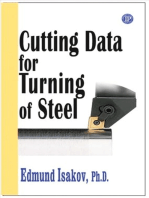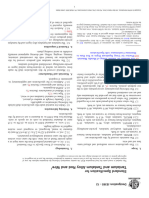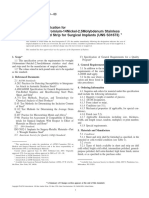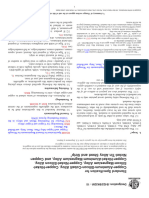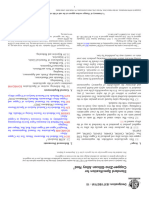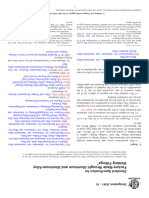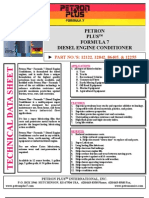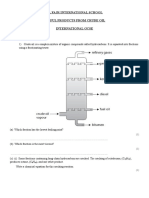0 ratings0% found this document useful (0 votes)
42 viewsPDFsam - B 386 - 03 (2011)
PDFsam - B 386 - 03 (2011)
Uploaded by
mike.jensen0581Copyright:
© All Rights Reserved
Available Formats
Download as PDF, TXT or read online from Scribd
PDFsam - B 386 - 03 (2011)
PDFsam - B 386 - 03 (2011)
Uploaded by
mike.jensen05810 ratings0% found this document useful (0 votes)
42 views5 pagesOriginal Title
PDFsam_B 386 - 03 (2011)
Copyright
© © All Rights Reserved
Available Formats
PDF, TXT or read online from Scribd
Share this document
Did you find this document useful?
Is this content inappropriate?
Copyright:
© All Rights Reserved
Available Formats
Download as PDF, TXT or read online from Scribd
Download as pdf or txt
0 ratings0% found this document useful (0 votes)
42 views5 pagesPDFsam - B 386 - 03 (2011)
PDFsam - B 386 - 03 (2011)
Uploaded by
mike.jensen0581Copyright:
© All Rights Reserved
Available Formats
Download as PDF, TXT or read online from Scribd
Download as pdf or txt
You are on page 1of 5
Designation: B386 − 03 (Reapproved 2011)
Standard Specification for
Molybdenum and Molybdenum Alloy Plate,
Sheet, Strip, and Foil1
This standard is issued under the fixed designation B386; the number immediately following the designation indicates the year of
original adoption or, in the case of revision, the year of last revision. A number in parentheses indicates the year of last reapproval. A
superscript epsilon (´) indicates an editorial change since the last revision or reapproval.
1. Scope 3.1.2 sheet, n—any product 0.187 in. (4.75 mm) or less in
1.1 This specification covers unalloyed molybdenum and thickness, to a minimum of 0.005 in. (0.13 mm) in thickness.
molybdenum alloy plate, sheet, strip, and foil as follows: 3.1.2.1 standard grade, n—sheet ordered without additional
1.1.1 Molybdenum 360—Unalloyed vacuum arc-cast mo- requirements imposed for applications which require drawing
lybdenum. to make a product.
1.1.2 Molybdenum 361—Unalloyed powder metallurgy mo- 3.1.2.2 drawing grade, n—sheet having thickness between
lybdenum. 0.015 in. (0.38 mm) and 0.060 in. (1.52 mm), intended for
1.1.3 Molybdenum Alloy 363—Vacuum arc-cast molybde- applications which require drawing of the sheet ot make a
num-0.5 % titanium-0.1 % zirconium (TZM) alloy. product.
1.1.4 Molybdenum Alloy 364—Powder metallurgy molyb- 3.1.3 strip, n—any product 0.187 in. (4.75 mm) or less in
denum-0.5 % titanium-0.1 % zirconium (TZM) alloy. thickness and less than 5 in. (127 mm) in width.
1.1.5 Molybdenum 365—Unalloyed vacuum arc-cast
molybdenum, low carbon. 3.1.4 foil, n—any product less than 0.005 in. (0.13 mm) in
1.1.6 Molybdenum Alloy 366—Vacuum arc-cast molybde- thickness.
num-30 % tungsten alloy.
1.1.7 Drawing Grade—A drawing grade is defined, which 4. Ordering Information
may be specified as a separate requirement by the purchaser. 4.1 Orders for material under this specification shall include
1.2 The values stated in inch-pound units are to be regarded the following information as applicable:
as standard. The values given in parentheses are mathematical 4.1.1 Material number and temper designation (Section 1
conversions to SI units that are provided for information only and Table 1),
and are not considered standard. 4.1.2 Product form and grade (Section 3),
4.1.3 Chemical requirements (Table 2 and Table 3),
2. Referenced Documents 4.1.4 Mechanical requirements (Section 7 and Table 1),
2.1 ASTM Standards:2 4.1.5 Softening temperature (Section 8),
E8 Test Methods for Tension Testing of Metallic Materials 4.1.6 Tolerances (Section 9, Table 4 and Fig. 1),
E345 Test Methods of Tension Testing of Metallic Foil 4.1.7 Workmanship and quality level requirements (Section
E643 Test Method for Ball Punch Deformation of Metallic 10),
Sheet Material 4.1.8 Packaging (Section 16),
4.1.9 Marking (Section 15),
3. Terminology 4.1.10 Certification and reports (Section 14), and
4.1.11 Disposition of rejected material (Section 13).
3.1 Definitions of Terms Specific to This Standard:
3.1.1 plate, n—any product 3⁄16 in. or more in thickness.
5. Materials and Manufacture
5.1 The various molybdenum mill products covered by this
1
This specification is under the jurisdiction of ASTM Committee B10 on specification shall be formed with the conventional extrusion,
Reactive and Refractory Metals and Alloys and is the direct responsibility of forging, or rolling equipment normally found in primary
Subcommittee B10.04 on Molybdenum and Tungsten.
Current edition approved June 1, 2011. Published June 2011. Originally ferrous and nonferrous plants. The ingot metal for Molybde-
approved in 1991. Last previous edition approved in 2003 as B386 – 03. DOI: num 360 and 365 and Molybdenum Alloys 363 and 366 is
10.1520/B0386-03R11. vacuum arc-melted in furnaces of a type suitable for reactive,
2
For referenced ASTM standards, visit the ASTM website, www.astm.org, or
contact ASTM Customer Service at service@astm.org. For Annual Book of ASTM
refractory metals and for Molybdenum 361 and Molybdenum
Standards volume information, refer to the standard’s Document Summary page on Alloy 364, the metal is consolidated by powder metallurgy
the ASTM website. methods.
Copyright © ASTM International, 100 Barr Harbor Drive, PO Box C700, West Conshohocken, PA 19428-2959. United States
1
B386 − 03 (2011)
TABLE 1 Mechanical Requirements
Yield Elonga-
TensileB Strength tion in 2 Minimum
Temper Strength,
Type Thickness, in. (mm) 0.2 % Offset, in. or 50 Bend Ra-
ConditionA min, ksi
(MPa) min, mm, min, dius
ksi (MPa) %
to 0.001 (0.025) 115 (795) 95 (655) 1 ...
over 0.001 to 0.002 (0.025 to 0.05) 115 (795) 95 (655) 2 ...
over 0.002 to 0.003 (0.05 to 0.075) 115 (795) 95 (655) 3 ...
over 0.003 to 0.004 (0.075 to 0.1) 115 (795) 95 (655) 4 ...
0.005 to 0.010 (0.13 to 0.25) 110 (760) 90 (620) 5 2tC
over 0.010 to 0.020 (0.25 to 0.5) 110 (760) 90 (620) 6 2t
SR
360, 361, 365 over 0.020 to 0.060 (0.5 to 1.5) 105 (725) 85 (585) 10 2t
over 0.060 to 0.100 (1.5 to 2.5) 100 (690) 80 (550) 14 2t
over 0.100 to 0.187 (2.5 to 4.75) 100 (690) 80 (550) 18 2t
3⁄16 to 1⁄2 (4.75 to 12.7) 100 (690) 80 (550) 10 ...
over 1⁄2 to 1 (12.7 to 25.4) 95 (655) 80 (550) 2D ...
over 1 to 11⁄2 (25.4 to 38) 95 (655) 80 (550) 1D ...
363, 364 SR 0.010 to 0.025 (0.25 to 0.635) 120 (830) 100 (690) 6 2t
over 0.025 to 0.060 (0.635 to 1.5) 120 (830) 100 (690) 7 2t
over 0.060 to 0.090 (1.5 to 2.3) 120 (830) 100 (690) 9 ...
over 0.090 to 0.187 (2.3 to 4.75) 120 (830) 100 (690) 10 ...
3⁄16 to 1⁄2 (4.75 to 12.7) 120 (830) 100 (690) 10 ...
over 1⁄2 to 1 (12.7 to 25.4) 110 (760) 95 (655) 10 ...
over 1 to 11⁄2 (25.4 to 38) 100 (690) 85 (585) 8 ...
360 RX 3 16
⁄ to 11⁄2 (4.75 to 38) 55 (380) 25 (170) 20 ...
363, 364 RX 3 16
⁄ to 11⁄2 (4.75 to 38) 75 (515) 45 (310) 10 ...
A
SR = stress-relieved. RX = essentially fully recrystallized.
B
Both longitudinal and transverse tests between 65 and 85°F (18 and 29°C).
C
Material thickness = t.
D
Transverse elongation variable due to cross rolling limitations.
TABLE 2 Chemical Requirements
Composition,%
Element Material Number
360 361 363 364 365 366
C 0.030 max 0.010 max 0.010–0.030 0.010–0.040 0.010 max 0.030 max
O, maxA 0.0015 0.0070 0.0030 0.030 0.0015 0.0025
N, maxA 0.002 0.002 0.002 0.002 0.002 0.002
Fe, max 0.010 0.010 0.010 0.010 0.010 0.010
Ni, max 0.002 0.005 0.002 0.005 0.002 0.002
Si, max 0.010 0.010 0.010 0.005 0.010 0.010
Ti ... ... 0.40–0.55 0.40–0.55 ... ...
W ... ... ... ... ... 27–33
Zr ... ... 0.06–0.12 0.06–0.12 ... ...
Mo balance balance balance balance balance balance
A
Pending approved methods of analysis, deviations from these limits alone shall not be cause for rejection.
6. Chemical Composition 6.2.3 The manufacturer shall not ship material that is
6.1 The molybdenum and molybdenum alloy ingots and outside the limits specified in Table 2 for the applicable type,
billets for conversion to finished products covered by this with the exception of oxygen and nitrogen, whose percentage
specification shall conform to the requirements of the chemical may vary with the method of fabrication.
composition prescribed in Table 2. 6.2.4 Check analysis limits shall be as specified in Table 3.
6.2 Check Analysis: 7. Mechanical Properties
6.2.1 Check analysis is an analysis made by the purchaser or
the manufacturer of the metal after it has been processed into 7.1 Material supplied under this specification shall conform
finished mill forms, and is either for the purpose of verifying to the mechanical property requirements given in Table 1,
the composition of a heat or lot or to determine variations in the when tested in the transverse direction to final working at test
composition within a heat or lot. temperatures between 65 and 85°F (18 and 29°C).
6.2.2 Check analysis tolerances do not broaden the specified 7.2 Tension test specimens shall be prepared and tested in
heat analysis requirements but cover variations between labo- accordance with Test Methods E8 or E345 for foil. Tensile
ratories in the measurement of chemical content. properties shall be determined using a strain rate of 0.002 to
2
B386 − 03 (2011)
TABLE 3 Permissible Variations in Check Analysis 9.4 Flatness tolerances on molybdenum and molybdenum
Check Permissible alloy flat products shall be as follows:
Analysis Variations
Material No. Flatness
Limits, in Check
max or range, % Analysis, % Deviation,
Thickness, in. (mm) max, %
C 360, 363, 364, 366, 0.010–0.040 ±0.005
361, 365 0.010 ±0.002 0.005 to 0.187 (0.13 to 4.75) 4
OA 361 0.0070 +10 % relative 3⁄16 to 1⁄2 (4.75 to 12.7) 5
360, 363, 365, 366 0.0030 +10 % relative Over 1⁄2 to 1 (over 12.7 to 25.4) 8
364 0.030 +10 % relative Over 1 to 11⁄2 (over 25.4 to 38) 8
NA 361, 364, 365 0.0020 +0.0005
360, 363, 366 0.0010 +0.0005 9.4.1 Determine flatness deviation as follows: (Fig. 1)
Fe 360, 361, 363, 364, 365, 366 0.010 +0.001
Ni 360, 361, 363, 364, 365, 366 0.005 +0.0005 Flatness deviation, % 5 ~ H/L ! 3 100 (1)
Si 360, 361, 363, 364, 365, 366 0.010 +0.002
Ti 363, 364 0.40–0.55 ±0.05 where:
W 366 27.0–33.0 ±1.0 H = maximum vertical distance between a flat reference
Zr 363, 364 0.06–0.12 ±0.02
surface and the lower surface of the flat product, and
A A
See Table 2, Footnote L = minimum horizontal distance between the highest point
of the flat product where H is determined, and the point
of contact of the lower surface of the flat product with
a flat reference surface.
0.005 in./in.·min (or mm/mm·min) through 0.6 % offset and
0.02 to 0.05 in/in·min (or mm/mm·min) to fracture. 10. Workmanship, Finish, and Appearance
7.3 For sheet and strip, the bend test specimens shall 10.1 Molybdenum and molybdenum alloy plate, sheet, strip,
withstand being bent at a temperature between 65 and 85°F (18 and foil shall be free of injurious external and internal
and 29°C) through an angle of 90° or more without fracture. imperfections of a nature that will interfere with the purpose
The bend shall be made on a radius equal to that shown in for which it is intended.
Table 3 for the applicable type. The bend test specimen shall be 10.2 Material may be supplied with as rolled, as cleaned, as
at least 0.5 in. (12.7 mm) wide and deburred. The speed of the machined, or as ground finish.
ram shall be 5 to 10 in. (127 to 254 mm)/min. 10.3 The manufacturer shall be permitted to remove surface
7.4 For sheet ordered as drawing grade, ball punch defor- imperfections provided such removal does not reduce the
mation tests shall be performed in accordance with Test dimensions below the minimum permitted by the tolerances for
Method E643. Drawing grade sheet shall meet the require- that dimension.
ments of Fig. 2.
11. Sampling
8. Softening Temperature 11.1 Care shall be exercised to ensure that the sample
8.1 If specified, the material supplied under this specifica- selected for testing is representative of the material and form
tion shall have mechanical properties not lower than those and is not contaminated by the sampling procedure.
shown in Table 1 after reheating in a protective atmosphere to
the following temperatures for a period of 30 min. 12. Methods of Chemical Analysis
Alloy Type °F °C 12.1 The chemical composition enumerated in this specifi-
cation shall in case of disagreement, be determined in accor-
360 1650 900
dance with the methods approved for referee purposes by
361 1650 900
363 2100 1150 ASTM. Where such methods are not available, methods of
364 2100 1150 analysis as mutually agreed upon by the manufacturer and the
365 1650 900
366 1900 1040
purchaser shall be employed.
13. Rejection
9. Permissible Variations in Dimensions
13.1 Material not conforming to this specification or to
9.1 Thickness tolerances on molybdenum and molybdenum
authorized modifications shall be subject to rejection. Unless
alloy material covered by this specification shall be as specified
otherwise specified, rejected material may be returned to the
in Table 4.
manufacturer at the manufacturer’s expense unless the pur-
9.2 Width tolerances shall be as agreed upon between the chaser receives, within 4 weeks of notice of rejection, other
manufacturer and the purchaser. In general, shearing tolerance instructions for disposition.
will be 61⁄16 in. (61.6 mm) and slitting tolerance will be 61⁄32
in. (60.8 mm). 14. Certification
9.3 Length and camber tolerances shall be as agreed upon 14.1 If requested, the manufacturer shall supply at least
between the manufacturer and the purchaser. In general, length three copies of a report of the chemical analysis of each heat
and camber tolerances will show a maximum deviation of 61⁄16 (Types 360, 363, 365, and 366) or powder metallurgy product
in. (1.6 mm) per foot length. from the powder lot (Types 361 and 364) represented in the
3
B386 − 03 (2011)
TABLE 4 Permissible Thickness Variations of Plate, Sheet, Strip and Foil
Thickness Tolerance,A in.
Specified Width, in. (mm) Specified Thickness, in. (mm) (mm)
12 (305) and under 0.005 to 0.010 (0.13 to 0.25), incl ±0.001 (±0.0254)
over 0.010 to 0.020 (0.25 to 0.51), incl ±0.002 (±0.0508)
over 0.020 (0.51) ±10 %
Over 12 to 24 (305 to 610), incl over 0.010 to 0.025 (0.25 to 0.64), incl ±0.0025 (±0.0635)
over 0.025 (0.64) ±10 %
Over 24 to 30 (610 to 762), incl over 0.016 to 0.030 (0.41 to 0.76), incl ±0.003 (±0.0762)
over 0.030 (0.76) ±10 %
Over 30 to 48 (762 to 1219), incl 0.040 (1.02) and over ±10 %
0.1875 (4.762) and over ±10 %
A
Tolerances for foil shall be as agreed upon between producer and purchaser.
FIG. 1 Plate and Sheet Flatness Tolerances
temper condition, nominal thickness, and quantity and number
of items covered by the shipment.
15. Product Marking
15.1 Unless otherwise specified, each plate, sheet, or strip
shall be legibly and conspicuously marked or tagged with the
number of this specification, material type and temper
condition, heat or lot number, manufacturer’s identification,
and the nominal thickness gage in inches. All markings must
withstand ordinary handling and shall be capable of removal
with standard cleaning solvents.
15.2 Coiled sheet, strip, and foil shall be similarly marked at
the outside end of each coil.
16. Packaging and Package Marking
FIG. 2 Ball Punch Deformation Requirements for Drawing Grade 16.1 Unless otherwise specified, material purchased under
Sheet this specification must be packaged by box or other suitable
protective containers and shall be so marked as to indicate the
shipment, and reports of the result of tests of each size of each nature of any special handling required.
heat or powder lot to determine properties required in Sections
7 and 8. 17. Keywords
14.2 The report shall include the purchase order number, 17.1 drawing grade sheet; foil; molybdenum; molybdenum
heat or powder lot number, this specification number, type and alloy; plate; sheet; strip
4
B386 − 03 (2011)
ASTM International takes no position respecting the validity of any patent rights asserted in connection with any item mentioned
in this standard. Users of this standard are expressly advised that determination of the validity of any such patent rights, and the risk
of infringement of such rights, are entirely their own responsibility.
This standard is subject to revision at any time by the responsible technical committee and must be reviewed every five years and
if not revised, either reapproved or withdrawn. Your comments are invited either for revision of this standard or for additional standards
and should be addressed to ASTM International Headquarters. Your comments will receive careful consideration at a meeting of the
responsible technical committee, which you may attend. If you feel that your comments have not received a fair hearing you should
make your views known to the ASTM Committee on Standards, at the address shown below.
This standard is copyrighted by ASTM International, 100 Barr Harbor Drive, PO Box C700, West Conshohocken, PA 19428-2959,
United States. Individual reprints (single or multiple copies) of this standard may be obtained by contacting ASTM at the above
address or at 610-832-9585 (phone), 610-832-9555 (fax), or service@astm.org (e-mail); or through the ASTM website
(www.astm.org). Permission rights to photocopy the standard may also be secured from the Copyright Clearance Center, 222
Rosewood Drive, Danvers, MA 01923, Tel: (978) 646-2600; http://www.copyright.com/
5
You might also like
- ITP For Brick Masonry WorkDocument8 pagesITP For Brick Masonry WorkVipin Kumar ParasharNo ratings yet
- Dhule, Maharashtra-lINDIA: 1000TC-80Compx14Den/225x78 8-123"satinDocument1 pageDhule, Maharashtra-lINDIA: 1000TC-80Compx14Den/225x78 8-123"satinDeepak ThoratNo ratings yet
- Cement Lined PipingDocument14 pagesCement Lined PipingMohammad Fazal Khan75% (4)
- Asme SB-443Document11 pagesAsme SB-443coronado777No ratings yet
- Fe Fe3c Diagram PDFDocument2 pagesFe Fe3c Diagram PDFAmyNo ratings yet
- Auroville ReportDocument35 pagesAuroville ReportIshani100% (1)
- PDFsam - B 392 - 09e1Document4 pagesPDFsam - B 392 - 09e1mike.jensen0581No ratings yet
- PDFsam - B 446 - 03 (2014)Document5 pagesPDFsam - B 446 - 03 (2014)mike.jensen0581No ratings yet
- SB 333Document8 pagesSB 333Yuvaraj SathishNo ratings yet
- PDFsam - B 393 - 09e1Document6 pagesPDFsam - B 393 - 09e1mike.jensen0581No ratings yet
- Asme B 446Document5 pagesAsme B 446Ramon AraujoNo ratings yet
- Astm B443Document8 pagesAstm B443HoangNo ratings yet
- Pre-Patinated Copper For Architectural ApplicationsDocument4 pagesPre-Patinated Copper For Architectural Applicationsanurag yadavNo ratings yet
- Astm B620-03 (2018)Document3 pagesAstm B620-03 (2018)Giancarlo MenachoNo ratings yet
- Astm B370-12Document5 pagesAstm B370-12cp yangNo ratings yet
- PDFsam - B 443 - 00 (2014)Document7 pagesPDFsam - B 443 - 00 (2014)mike.jensen0581No ratings yet
- PDFsam - B 463 - 10 (2016)Document2 pagesPDFsam - B 463 - 10 (2016)mike.jensen0581No ratings yet
- Zirconium and Zirconium Alloy Bar and Wire: Standard Specification ForDocument5 pagesZirconium and Zirconium Alloy Bar and Wire: Standard Specification ForTuanbk NguyenNo ratings yet
- Astm B860Document3 pagesAstm B860EvelynNo ratings yet
- B582-07 (Reapproved 2013)Document3 pagesB582-07 (Reapproved 2013)Luis Jose DuranNo ratings yet
- A 554 _ 03 ;QTU1NA__Document6 pagesA 554 _ 03 ;QTU1NA__asgharmahmood564No ratings yet
- Astm A65Document3 pagesAstm A65ptnvnc1111No ratings yet
- ASTM B574 - 2006e1Document4 pagesASTM B574 - 2006e1Cesar ParadaNo ratings yet
- UNS N06002, UNS N06230, UNS N12160, and UNS R30556 Plate, Sheet, and StripDocument3 pagesUNS N06002, UNS N06230, UNS N12160, and UNS R30556 Plate, Sheet, and StripLemir LopezNo ratings yet
- Low-Carbon Nickel-Chromium-Molybdenum, Low-Carbon Nickel-Molybdenum-Chromium-Tantalum, Low-Carbon Nickel-Chromium-Molybdenum-Copper, and Low-Carbon Nickel-Chromium-Molybdenum-Tungsten Alloy RodDocument4 pagesLow-Carbon Nickel-Chromium-Molybdenum, Low-Carbon Nickel-Molybdenum-Chromium-Tantalum, Low-Carbon Nickel-Chromium-Molybdenum-Copper, and Low-Carbon Nickel-Chromium-Molybdenum-Tungsten Alloy RodiyamNo ratings yet
- Astm (B443)Document7 pagesAstm (B443)Marcos AndradeNo ratings yet
- Astm A493-16Document4 pagesAstm A493-16Eugene DerkachNo ratings yet
- PDFsam - B 365 - 12Document4 pagesPDFsam - B 365 - 12mike.jensen0581No ratings yet
- PDFsam - B 425 - 11Document5 pagesPDFsam - B 425 - 11mike.jensen0581No ratings yet
- B 98 - B 98m - 98 Qjk4l0i5oe0tukveDocument8 pagesB 98 - B 98m - 98 Qjk4l0i5oe0tukvechavezleslyaliNo ratings yet
- Magnesium-Alloy Forgings: Standard Specification ForDocument4 pagesMagnesium-Alloy Forgings: Standard Specification ForRizwanNo ratings yet
- MTD 4 4869 For Bis Use Only Bureau ofDocument8 pagesMTD 4 4869 For Bis Use Only Bureau ofMangesh GhagNo ratings yet
- Wrought 18Chromium-14Nickel-2.5Molybdenum Stainless Steel Sheet and Strip For Surgical Implants (UNS S31673)Document4 pagesWrought 18Chromium-14Nickel-2.5Molybdenum Stainless Steel Sheet and Strip For Surgical Implants (UNS S31673)Angel ChangNo ratings yet
- Astm 1394 2009Document4 pagesAstm 1394 2009Yuri ValenciaNo ratings yet
- SB-162 Ni PlateDocument14 pagesSB-162 Ni PlateYuvaraj SathishNo ratings yet
- Steel Bars, Alloy, Standard GradesDocument4 pagesSteel Bars, Alloy, Standard GradesGian SennaNo ratings yet
- F 1 - 94 R00 - Rjetukve PDFDocument4 pagesF 1 - 94 R00 - Rjetukve PDFYayan RnsNo ratings yet
- PDFsam - B 391 - 09e1Document3 pagesPDFsam - B 391 - 09e1mike.jensen0581No ratings yet
- Astm B443.8889Document7 pagesAstm B443.8889Kelly BatesNo ratings yet
- ASTM B352-B352M-Standard Specification For Zirconium and Zirconium Alloy Sheet, Strip, and Plate For Nuclear AplicationDocument6 pagesASTM B352-B352M-Standard Specification For Zirconium and Zirconium Alloy Sheet, Strip, and Plate For Nuclear Aplicationadrian david garcia gascaNo ratings yet
- Steel Joint Bars, Low, Medium, and High Carbon (Non-Heat-Treated)Document3 pagesSteel Joint Bars, Low, Medium, and High Carbon (Non-Heat-Treated)matiullahNo ratings yet
- PDFsam - B 379 - 11Document5 pagesPDFsam - B 379 - 11mike.jensen0581No ratings yet
- Nickel-Copper Alloy Rod, Bar, and Wire: Standard Specification ForDocument9 pagesNickel-Copper Alloy Rod, Bar, and Wire: Standard Specification Forkrishnamoorthy SrinivasanNo ratings yet
- Copper-Nickel-Zinc Alloy (Nickel Silver) and Copper-Nickel Rod and BarDocument5 pagesCopper-Nickel-Zinc Alloy (Nickel Silver) and Copper-Nickel Rod and BarmahfuzNo ratings yet
- Astm B443 PDFDocument8 pagesAstm B443 PDFMohammad ShamimNo ratings yet
- Standard Specification For Steel Sheet Zinc Coated Galvanized or Zinc Iron Alloy Coated Galvannealed by The Hot Dip ProcessDocument4 pagesStandard Specification For Steel Sheet Zinc Coated Galvanized or Zinc Iron Alloy Coated Galvannealed by The Hot Dip ProcessarchahmedassafNo ratings yet
- A554-15a Standard Specification For Welded Stainless Steel Mechanical TubingDocument5 pagesA554-15a Standard Specification For Welded Stainless Steel Mechanical TubingChuthaNo ratings yet
- Asme BPVC - Ii B-2017Document2 pagesAsme BPVC - Ii B-2017Lipika GayenNo ratings yet
- A 554 _ 98 ;QTU1NC05OEUXDocument6 pagesA 554 _ 98 ;QTU1NC05OEUXasgharmahmood564No ratings yet
- Magnesium-Alloy Forgings: Standard Specification ForDocument4 pagesMagnesium-Alloy Forgings: Standard Specification ForDhavalNo ratings yet
- Steel Sheet, Zinc-Coated (Galvanized) or Zinc-Iron Alloy-Coated (Galvannealed) by The Hot-Dip ProcessDocument13 pagesSteel Sheet, Zinc-Coated (Galvanized) or Zinc-Iron Alloy-Coated (Galvannealed) by The Hot-Dip ProcessKannanNo ratings yet
- A 111 - 99a (2020)Document3 pagesA 111 - 99a (2020)Anurag YadavNo ratings yet
- Specification For Copper-Silicon Alloy Plate, Sheet, Strip, and Rolled Bar For General Purposes and Pressure VesselsDocument4 pagesSpecification For Copper-Silicon Alloy Plate, Sheet, Strip, and Rolled Bar For General Purposes and Pressure VesselsJolettitoNo ratings yet
- India 4Document4 pagesIndia 4Ekwara TonnyNo ratings yet
- Copper-Nickel-Zinc Alloy (Nickel Silver) and Copper-Nickel Rod and BarDocument5 pagesCopper-Nickel-Zinc Alloy (Nickel Silver) and Copper-Nickel Rod and Barabdulkadir aliNo ratings yet
- ASTM A848-01 (Reapproved 2011)Document6 pagesASTM A848-01 (Reapproved 2011)amh.fpdNo ratings yet
- ASTMC90Document7 pagesASTMC90eng.usmanali2012No ratings yet
- A 929 – A 929M – 01 ;QTKYOS9BOTI5TQ__Document4 pagesA 929 – A 929M – 01 ;QTKYOS9BOTI5TQ__quatudogonNo ratings yet
- Astm B575Document5 pagesAstm B575Jota Jacques100% (1)
- SB 335Document6 pagesSB 335Yuvaraj SathishNo ratings yet
- Composition Bronze or Ounce Metal Castings: Standard Specification ForDocument3 pagesComposition Bronze or Ounce Metal Castings: Standard Specification ForAhmed BilalNo ratings yet
- Astm A210Document3 pagesAstm A210Rajan SteeveNo ratings yet
- All About History 59 - 2017 UK - 61Document10 pagesAll About History 59 - 2017 UK - 61mike.jensen0581No ratings yet
- All About History 59 - 2017 UK - 41Document10 pagesAll About History 59 - 2017 UK - 41mike.jensen0581No ratings yet
- All About History 59 - 2017 UK - 21Document20 pagesAll About History 59 - 2017 UK - 21mike.jensen0581No ratings yet
- History 59 UK 1Document20 pagesHistory 59 UK 1mike.jensen0581No ratings yet
- All About History 59 - 2017 UK - 51Document10 pagesAll About History 59 - 2017 UK - 51mike.jensen0581No ratings yet
- PDFsam - B 447 - 12aDocument10 pagesPDFsam - B 447 - 12amike.jensen0581No ratings yet
- PDFsam - B 424 - 11 (2016)Document4 pagesPDFsam - B 424 - 11 (2016)mike.jensen0581No ratings yet
- PDFsam - B 422 - B 422M - 15Document5 pagesPDFsam - B 422 - B 422M - 15mike.jensen0581No ratings yet
- PDFsam - B 417 - 13Document3 pagesPDFsam - B 417 - 13mike.jensen0581No ratings yet
- PDFsam - B 438 - 13Document27 pagesPDFsam - B 438 - 13mike.jensen0581No ratings yet
- PDFsam - B 401 - 12 (2016)Document5 pagesPDFsam - B 401 - 12 (2016)mike.jensen0581No ratings yet
- PDFsam - B 416 - 98 (2013)Document4 pagesPDFsam - B 416 - 98 (2013)mike.jensen0581No ratings yet
- PDFsam - B 390 - 92 (2006)Document4 pagesPDFsam - B 390 - 92 (2006)mike.jensen0581No ratings yet
- PDFsam - B 403 - 12Document4 pagesPDFsam - B 403 - 12mike.jensen0581No ratings yet
- PDFsam - B 423 - 11 (2016)Document4 pagesPDFsam - B 423 - 11 (2016)mike.jensen0581No ratings yet
- PDFsam - B 400 - B 400M - 14Document6 pagesPDFsam - B 400 - B 400M - 14mike.jensen0581No ratings yet
- PDFsam - B 389 - 81 (2016)Document4 pagesPDFsam - B 389 - 81 (2016)mike.jensen0581No ratings yet
- PDFsam - B 371 - B 371M - 15Document4 pagesPDFsam - B 371 - B 371M - 15mike.jensen0581No ratings yet
- PDFsam - B 379 - 11Document5 pagesPDFsam - B 379 - 11mike.jensen0581No ratings yet
- PDFsam - B 374 - 06 (2011)Document10 pagesPDFsam - B 374 - 06 (2011)mike.jensen0581No ratings yet
- PDFsam - B 380 - 97 (2013)Document3 pagesPDFsam - B 380 - 97 (2013)mike.jensen0581No ratings yet
- PDFsam - B 366 - B 366M - 16Document9 pagesPDFsam - B 366 - B 366M - 16mike.jensen0581No ratings yet
- PDFsam - B 363 - 14Document4 pagesPDFsam - B 363 - 14mike.jensen0581No ratings yet
- PDFsam - B 367 - 13Document6 pagesPDFsam - B 367 - 13mike.jensen0581No ratings yet
- PDFsam - B 368 - 09 (2014)Document4 pagesPDFsam - B 368 - 09 (2014)mike.jensen0581No ratings yet
- PDFsam - B 360 - 15Document5 pagesPDFsam - B 360 - 15mike.jensen0581No ratings yet
- PDFsam - B 361 - 16Document5 pagesPDFsam - B 361 - 16mike.jensen0581No ratings yet
- Fire Resistance AluminumDocument10 pagesFire Resistance AluminumrohimiNo ratings yet
- NTC1001Document1 pageNTC1001Juan Sebastián CastroNo ratings yet
- A Study of Recycling Technology For Paint-Coated Plastic Automotive BumperDocument3 pagesA Study of Recycling Technology For Paint-Coated Plastic Automotive BumperBRUNA TAVARES COUTINHO SANTOSNo ratings yet
- Jerguson Gage Cuts Section PDFDocument26 pagesJerguson Gage Cuts Section PDFDanielArgumedoNo ratings yet
- Petron Plustm Formula 7 Diesel Engine ConditionerDocument2 pagesPetron Plustm Formula 7 Diesel Engine ConditionerwellblablablaNo ratings yet
- F 1789 - 17Document15 pagesF 1789 - 17Acilasac 2018No ratings yet
- LPGMSDSDocument5 pagesLPGMSDSrinaNo ratings yet
- WINTER Catalogue Diamond DressersDocument200 pagesWINTER Catalogue Diamond DressersFarhaan MukadamNo ratings yet
- AIMOL Cement IndustryDocument57 pagesAIMOL Cement IndustryAdrianNo ratings yet
- RCT-ConRep FR MortarDocument2 pagesRCT-ConRep FR MortarFahad NadeemNo ratings yet
- Optimization of Catalytic Pyrolysis Process For Change of Plastic WasteDocument4 pagesOptimization of Catalytic Pyrolysis Process For Change of Plastic WasteDana MateiNo ratings yet
- Repair and Retrofit Manual RCC PresentationDocument53 pagesRepair and Retrofit Manual RCC Presentationerjuniorsanjip100% (1)
- Saudi Aramco Inspection Checklist: Depressurization & Disposal of Hydrotest Water SAIC-A-2017 15-Dec-09 MechDocument3 pagesSaudi Aramco Inspection Checklist: Depressurization & Disposal of Hydrotest Water SAIC-A-2017 15-Dec-09 MechEagle SpiritNo ratings yet
- Engineering and Structural AdhesivesDocument150 pagesEngineering and Structural AdhesivesAhmadNo ratings yet
- Philippine CraftsDocument23 pagesPhilippine CraftsAhnJelloNo ratings yet
- Plastic Shrinkage Cracking (BPS)Document36 pagesPlastic Shrinkage Cracking (BPS)shingkeongNo ratings yet
- Asme Sec V Art 6 2007Document8 pagesAsme Sec V Art 6 2007Erika Solano LobatoNo ratings yet
- Catalogue - Poly - Chain - GT - CarbonDocument2 pagesCatalogue - Poly - Chain - GT - CarbonCoffee. copylahNo ratings yet
- Crude Oil ExtractionDocument5 pagesCrude Oil ExtractionSyed AbrarNo ratings yet
- CM 939 Weldable® Alloy: January 2004Document10 pagesCM 939 Weldable® Alloy: January 2004DimaNo ratings yet
- Shot CreteDocument6 pagesShot CreteR.RAVINDRANNo ratings yet
- A Study On The Quality of Sliver and Noil Using Backward and Forward Feeding System of Combing MachineDocument7 pagesA Study On The Quality of Sliver and Noil Using Backward and Forward Feeding System of Combing MachineMoshiur RahmanNo ratings yet
- Estimate - Rough Cost Estimate For Athgarh Bus StandDocument3 pagesEstimate - Rough Cost Estimate For Athgarh Bus StandSaudagar BiswalNo ratings yet
- Comparitive Study On Strength of Geopolymerized Dredged Sea Sand On Tetrapods For The Application in Coastal RegionDocument49 pagesComparitive Study On Strength of Geopolymerized Dredged Sea Sand On Tetrapods For The Application in Coastal RegionVinod RajNo ratings yet
- Bmrs Cat 2010 Sect 02-1Document30 pagesBmrs Cat 2010 Sect 02-1Steve McNallyNo ratings yet




